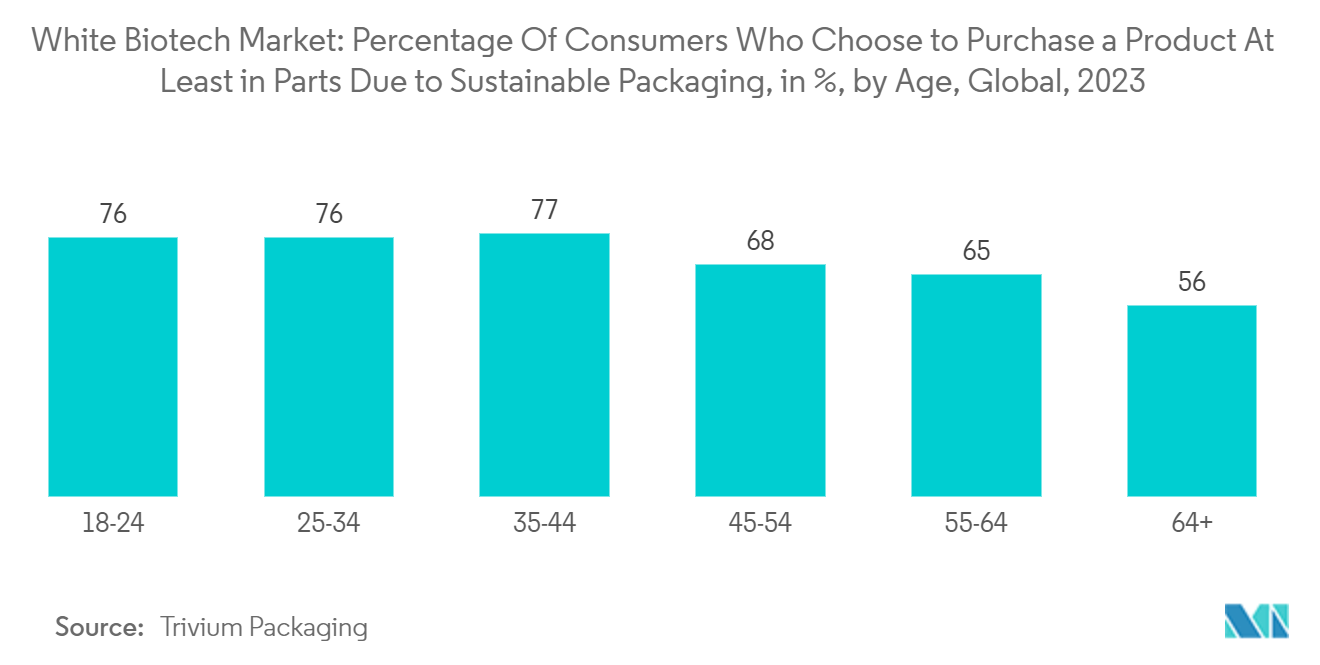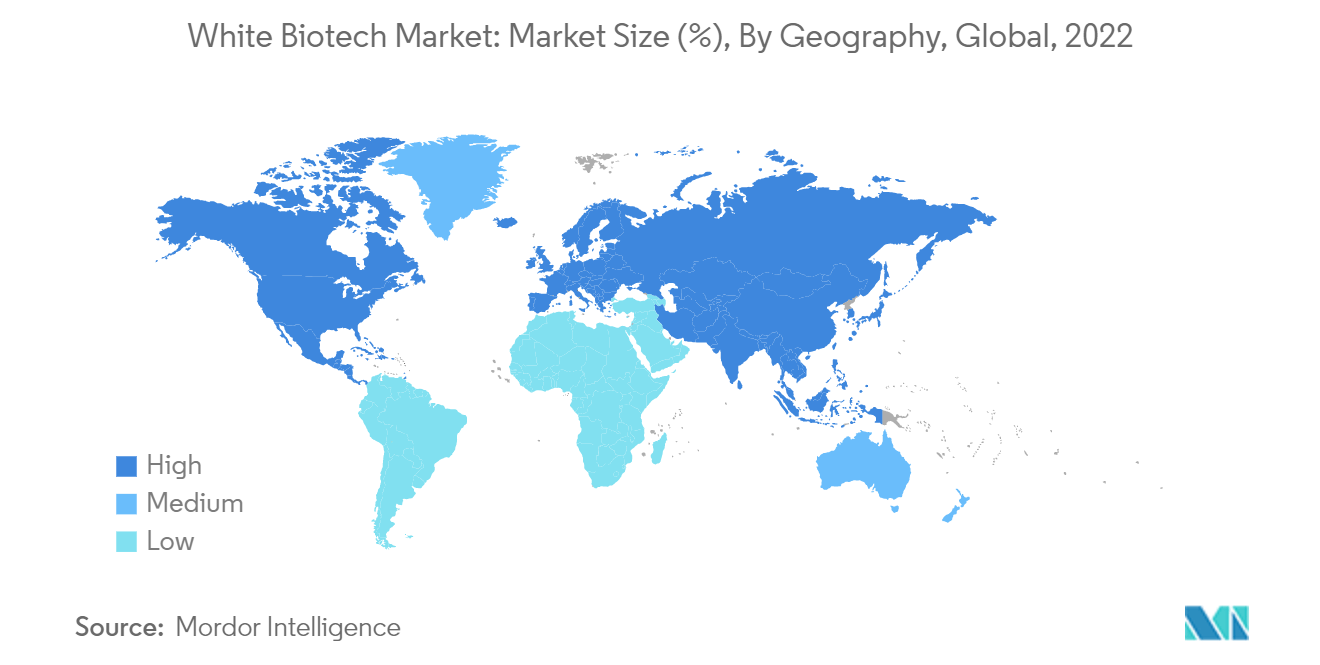Market Trends of White Biotech Industry
Increasing Demand for Environmentally Friendly Products
- In recent years, consumers across the globe have become more conscious of the adverse environmental impacts of the products they buy and consume. For instance, according to a survey conducted by Hankook Ilbo in South Korea from May to June 2022 on the influence of environmentally friendly certificate marks attached to a product on purchasing decisions, more than 72 percent of surveyed consumers answered that such a label impacted their purchasing decisions.
- As a result, companies focus on improving the sustainability of their products and, consequently, the green credentials of their brands. This has further increased the demand for white biotechnology, which uses living cells from yeast, molds, bacteria, and plants, and enzymes to synthesize products that are easily degradable, require less energy, and create less waste during production.
- White biotechnology provides valuable components for food, pharmaceutical, agriculture, and other industries. The use of microbial-derived compounds ranges from obtaining compounds, such as flavorings, essential amino acids, polyunsaturated fatty acids, and organic acids, for the F&B industry to making fertilizers and biological pesticides for agriculture use. Also, microbes play a significant role in human health and well-being.
- Microbes produce primary metabolites such as vitamins, nucleotides, amino acids, and secondary metabolites. These secondary metabolites are used to make many drugs. Therefore, the vast applications of microbial-derived components and the increased demand for bio-based products are anticipated to influence the market positively in the coming years.

Asia-Pacific is the Fastest-growing Region in the White Biotech Market
- The biotech industry in the Asia-Pacific region has proliferated over the past decade due to the escalated demand for medical technologies, biologics, and biotechnologically altered food ingredients. The increasing production of bio-products acts as a key factor in bolstering the market growth in the region.
- As China prioritizes sustainability, environmental protection, and technological advancements, demand for white biotechnology will rise in various sectors to fulfill the need for sustainable solutions, energy security, improved healthcare, agricultural productivity, and waste management. Moreover, players strategically invest in local companies to expand their market share.
- For instance, in 2021, BASF Venture Capital (BVC) invested in Bota Biosciences Ltd (Bota Bio), an industrial synthetic biotech company located in Hangzhou, China, which develops next-generation biotechnology platforms, enabling sustainable and economical production of high-value products for a broad array of industrial applications, like sweeteners, vitamins, personal care, or crop protection products. Other than this, white biotech has paved great opportunity in Japan's functional food and beverage segment due to the increased consumer inclinational toward food products with high nutritional claims.
- Furthermore, investments from foreign companies in biotech startups in Australia due to the country's strong research capabilities, innovative ecosystem, and growth potential are expected to propel the market growth.

